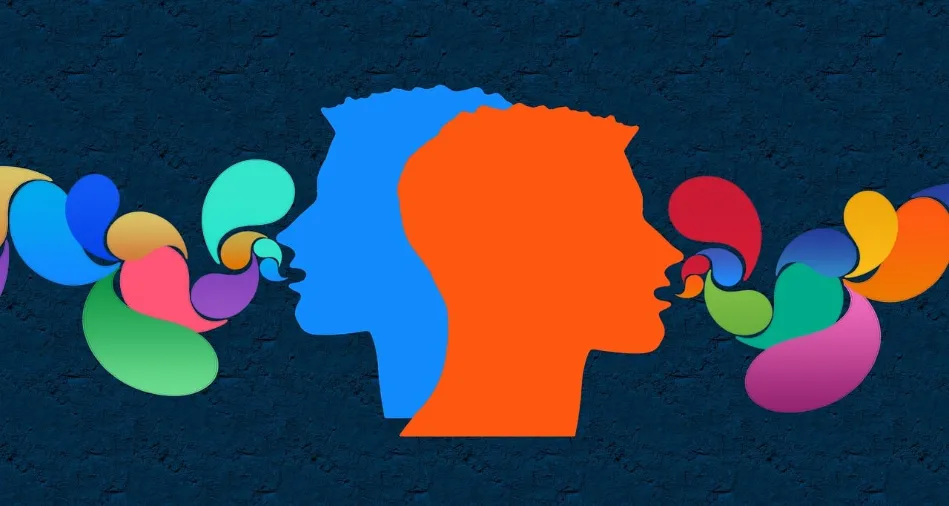[read-time]

Table of Contents
- Exploring the Associations Between Personality Colors & Family Relationships
- 8 Ways Your Family Affect Your Personality
- The Influence of Personality Colors on Family Relationships
- The 5 Powerful Ways Your Personality Colors Impacts Positive Family Relationships
- Understanding the Different Personality Colors and Their Traits
- Applying the Knowledge: Using Personality Colors to Improve Family Communication
- Nurturing Healthy Family Relationships: Tips for Balancing Different Personality Colors
- The Role of Family in Shaping Our Personality: How Our Upbringing Impacts Our Color Preferences
- Embracing Diversity: Appreciating and Respecting Different Personality Colors within the Family
- The Takeaway
- FAQs
- What are personality color traits?
- How do personality color traits affect family dynamics?
- What are some common challenges when different color personalities coexist in a family?
- How can families use knowledge of personality color traits to improve relationships?
- Are personality color traits fixed, or can they change over time?
Exploring the Associations Between Personality Colors & Family Relationships
Have you ever wondered why certain colors appeal to you more than others? The hues you’re drawn to can actually reveal a lot about your personality and how you interact with your family. Your personality color preferences are not just a matter of aesthetic taste – they can significantly influence your family relationships in profound ways.
In this article, we’ll dive deep into the fascinating connections between personality, color, and family relationships. We’ll uncover the surprising influence your personality color has on your family relationships and explore five powerful ways it shapes your family interactions. By understanding the power of color, you’ll gain valuable insights to improve communication, resolve conflicts, and foster deeper connections within your family.
8 Ways Your Family Affect Your Personality
Your family plays a crucial role in shaping your personality from a young age. Here are eight ways your family can influence your personality development:
- Modeling Behavior: The way your parents and siblings behave becomes a template for your own actions and attitudes.
- Emotional Experiences: The emotional climate in your family, whether it’s nurturing or tumultuous, can deeply impact your emotional intelligence and self-awareness.
- Belief Systems: The values, beliefs, and worldviews instilled by your family become the foundation for your own belief system.
- Communication Styles: The way your family communicates, whether it’s open and expressive or reserved and distant, affects your communication skills.
- Coping Mechanisms: The strategies your family uses to handle stress and challenges can shape your own problem-solving abilities.
- Sense of Identity: Your family’s dynamics and the roles you play within the family unit contribute to your sense of self and personal identity.
- Adaptability: Growing up in a stable or chaotic family environment can impact your flexibility and ability to adapt to change.
- Attachment Styles: The quality of your early attachments with primary caregivers can influence your interpersonal relationships and attachment styles later in life.
Understanding how your family has shaped your personality is crucial in recognizing the profound impact it can have on your family relationships.
The Influence of Personality Colors on Family Relationships
Your personality color preferences, which are deeply rooted in your psyche, can have a significant influence on your family dynamics. Each color represents a unique set of traits, strengths, and challenges that can either complement or clash with the personalities of your family members.
For example, if you’re a “Blue” personality who values harmony, empathy, and emotional connection, you may struggle to communicate effectively with a “Red” personality who is more assertive, competitive, and task-oriented. Navigating these differences can lead to misunderstandings, conflicts, and strained relationships within the family.
On the other hand, if your family members have a diverse range of personality colors, it can create a rich tapestry of perspectives, skills, and problem-solving approaches that can strengthen your family’s resilience and adaptability.
Understanding the influence of personality colors on family dynamics is the first step in cultivating more harmonious and fulfilling relationships within your family.
The 5 Powerful Ways Your Personality Colors Impacts Positive Family Relationships
- Communication and Understanding:
- Your personality color shapes the way you communicate, express your emotions, and process information.
- This can lead to misunderstandings and communication breakdowns if your family members have vastly different communication styles.
- By recognizing and respecting these differences, you can learn to adapt your communication approach to better connect with your family.
- Conflict Resolution:
- Personality colors influence how you handle conflicts and disagreements within the family.
- “Red” personalities may be more confrontational, while “Blues” may avoid conflict altogether.
- Identifying these patterns can help your family develop more constructive conflict resolution strategies.
- Roles and Responsibilities:
- Your personality color can determine the roles and responsibilities you naturally gravitate towards within the family.
- “Greens” may excel at problem-solving and task management.
- Recognizing these strengths can help your family members collaborate more effectively and support one another.
- Emotional Needs and Support:
- Personality colors reflect your emotional needs and the way you seek support from your family.
- “Blues” may require more emotional validation, while “Oranges” may crave more spontaneity and adventure.
- Understanding these needs can help your family members provide the kind of support and nurturing that each person requires.
- Decision-Making and Goal-Setting:
- Personality colors influence how you approach decision-making and goal-setting within the family.
- Acknowledging these differences can lead to more balanced and well-rounded decision-making processes.
By recognizing the impact of your personality color on these key aspects of family life, you can foster greater understanding, empathy, and collaboration within your family.
Understanding the Different Personality Colors and Their Traits
To fully appreciate the influence of personality colors on family relationships, let’s explore the unique characteristics of each color:
| Personality Color | Key Traits |
| Red | Assertive, competitive, results-oriented, risk-taking |
| Blue | Empathetic, harmonious, emotionally expressive, sensitive |
| Green | Analytical, problem-solving, innovative, independent |
| Orange | Spontaneous, adventurous, creative, energetic |
Understanding these distinct personality colors can help you and your family members identify your individual strengths, preferences, and potential areas of conflict or complementarity. This knowledge can be a powerful tool in navigating family relationships and fostering greater harmony.
Applying the Knowledge: Using Personality Colors to Improve Family Communication

Now that you’re aware of the influence of personality colors on family dynamics, let’s explore how you can apply this knowledge to improve communication and strengthen your family relationships.
- Identify Your Family’s Personality Color Palette: Encourage your family members to take a personality color assessment to discover their predominant color traits. This will help you understand the diverse perspectives and needs within your family.
- Adapt Your Communication Style: Based on your family members’ personality colors, adjust your communication approach to better connect with them. For example, use more emotional language when speaking with “Blue” personalities, or provide clear, step-by-step instructions for “Gold” personalities.
- Embrace Differences and Appreciate Strengths: Recognize that each personality color brings unique strengths and contributions to the family. Celebrate these differences and find ways to leverage your family’s diverse talents.
- Establish Shared Understanding: Discuss the concept of personality colors with your family and how it influences your interactions. This can help everyone develop greater empathy, patience, and appreciation for one another.
- Collaborate on Problem-Solving: When faced with family challenges, bring together your family’s diverse personality colors to approach the problem from multiple angles. This can lead to more creative and effective solutions.
- Nurture Emotional Needs: Ensure that each family member’s emotional needs are met by providing the type of support and validation that aligns with their personality color preferences.
By implementing these strategies, you can transform your family dynamics and cultivate more harmonious, fulfilling, and enriching relationships.
Nurturing Healthy Family Relationships: Tips for Balancing Different Personality Colors
Maintaining healthy family relationships when you have a diverse range of personality colors can be a delicate balancing act. Here are some tips to help you navigate this challenge:
- Foster Open Communication: Encourage open and honest dialogue within your family, where everyone feels heard and respected, regardless of their personality color.
- Embrace Flexibility: Be willing to adapt your communication and problem-solving approaches to accommodate the needs of different personality colors. Avoid rigidity and be open to compromise.
- Prioritize Empathy and Understanding: Make a conscious effort to understand and empathize with your family members’ perspectives, even if they differ from your own.
- Celebrate Unique Contributions: Recognize and appreciate the unique strengths and talents that each family member brings to the table, regardless of their personality color.
- Establish Clear Boundaries: Clearly communicate your own needs and boundaries, while also respecting the boundaries of others within the family.
- Seek External Support: If necessary, consider seeking the guidance of a family therapist or counselor who can help your family navigate the complexities of different personality colors.
By implementing these strategies, you can create a harmonious family environment that celebrates diversity, fosters mutual understanding, and strengthens the bonds between you and your loved ones.
Encourage family members to also take the personality test and compare your results. Discovering your family’s personality color palette can be a revealing and insightful experience that brings you closer together.
The Role of Family in Shaping Our Personality: How Our Upbringing Impacts Our Color Preferences

As we’ve explored, your family plays a crucial role in shaping your personality and color preferences. The way you were raised, the dynamics within your family, and the experiences you had growing up all contribute to the development of your unique personality traits and color associations.
For example, if you grew up in a family that valued tradition, stability, and order, you may have developed a strong “Gold” personality color. Conversely, if your family encouraged creativity, spontaneity, and risk-taking, you may have a more “Orange” personality.
Understanding the connection between your family upbringing and your personality color preferences can provide valuable insights into your behavior, decision-making, and interpersonal relationships. It can also help you recognize how your family’s influence has shaped the way you interact with your own family members.
By acknowledging the role of your family in your personality development, you can gain a deeper understanding of yourself and make more informed choices to cultivate healthier, more fulfilling family relationships.
Embracing Diversity: Appreciating and Respecting Different Personality Colors within the Family
In a diverse family, where each member possesses a unique personality color, it’s crucial to embrace and respect these differences. Rather than viewing them as challenges, see them as opportunities for growth, learning, and enrichment.
When you celebrate the diversity of personality colors within your family, you create an environment that:
- Encourages open-mindedness and empathy
- Fosters creative problem-solving
- Promotes effective communication and collaboration
- Strengthens the family’s overall resilience and adaptability
By recognizing and appreciating the unique strengths and perspectives that each personality color brings, you can cultivate a family dynamic that is vibrant, harmonious, and deeply fulfilling.
Remember, your family’s diversity is not a weakness, but a strength to be nurtured and celebrated. Embrace the richness of your family’s personality color palette, and watch as your relationships blossom and thrive.
The Takeaway
Celebrating the Unique Blend of Personality Colors in Your Family
In conclusion, your personality color and those of your family members have a profound influence on your family dynamics. By understanding the impact of personality colors, you can navigate your family relationships with greater awareness, empathy, and effectiveness.
Remember, every family is a unique tapestry of personality colors, each thread contributing to the overall strength and beauty of the whole. Celebrate the diversity within your family, and use the knowledge of personality colors to foster deeper connections, resolve conflicts, and create a harmonious, fulfilling family environment.
For a bit of fun, encourage your family to also take the ChromaLife color trait test and compare your results. Discovering your family’s personality color palette can be a revealing and insightful experience that brings you closer together.
FAQs
What are personality color traits?
Personality color traits refer to a system of categorizing personality types using colors. Each color represents a set of characteristics, behaviors, and preferences. The most common colors used are Red, Blue, Green, and Yellow, though some systems may include additional colors.
How do personality color traits affect family dynamics?
Personality color traits can significantly influence family interactions, communication styles, and overall harmony. Understanding each family member’s dominant color trait can help in:
- Improving communication
- Resolving conflicts
- Assigning roles and responsibilities
- Creating a balanced family environment
What are some common challenges when different color personalities coexist in a family?
Some common challenges include:
- Communication misunderstandings
- Conflicting priorities and values
- Differing approaches to problem-solving
- Potential power struggles or competition
How can families use knowledge of personality color traits to improve relationships?
Families can use this knowledge to:
- Develop empathy and understanding for different perspectives
- Adapt communication styles to suit each family member
- Create a more balanced approach to family activities and decision-making
- Recognize and appreciate each member’s strengths and contributions
Are personality color traits fixed, or can they change over time?
While individuals often have a dominant color trait, it’s important to note that:
- People can exhibit traits from multiple color categories
- Personality traits can evolve over time due to experiences and personal growth
- Family dynamics can influence the expression of color traits
- Understanding one’s color trait doesn’t limit personal development or change
Understanding personality color traits can be a valuable tool for families to enhance their relationships and create a more harmonious home environment.
Emophilia and Personality Color Traits: The Fascinating Connection Between Them
[read-time] Emophilia meaning: What is it and what does it mean? Emophilia, a term derived from the Greek word “emophilia,” meaning “love…
The Personality Color Assessment & The OCEAN Model (Big 5
[read-time] This article delves into how our personality color assessment aligns with the OCEAN Model – The Big 5 Personality Traits…
Personality Color Assessment – What Exactly is it and Why
In this article you’ll learn 5 vital benefits of personality color assessments!…
The 5 Love Languages & The Color Assessment: The Real
[read-time] Table of ContentsThe Rainbow of the Personality Color AssessmentA Groundbreaking ConceptThe Five Love Languages: A Universal Blueprint for ConnectionThe Enduring…
Welcome to the ChromaLife Blog!
[read-time] Welcome to the ChromaLife Personality Color Assessment blog: where every hue tells a story! Are you ready to dive into the…
8 Morning Habits of Highly Successful People You Can Adopt
What exactly do these high achievers do in those early hours that sets them apart? And more importantly, how can…
Are Personality Changes Possible? The Science Says Yes
Personality change, is it possible? We can often wonder if we’re stuck with the personality we’re born with or if…
The Hidden Dangers of Flow State: 2 Warning Signs You’re
Flow state is an intriguing phenomenon. Have you ever been so engrossed in an activity that time seems to stand…
Discover the Magic of Mirror Neurons! Stop Missing Out on
[read-time] Mirror neurons is a remarkable discovery in the fascinating world of neuroscience. These specialized brain cells play a pivotal role…
The Domino Effect in psychology refers to the cascading impact
[read-time] The Domino Effect in psychology refers to the cascading impact of one behavior, thought, or action leading to a chain…
Uncovering Social Desirability Bias in AI Personality Tests: The Surprising
An intriguing area of study of AI involves social desirability bias when administering personality tests to large language models (LLMs)…











